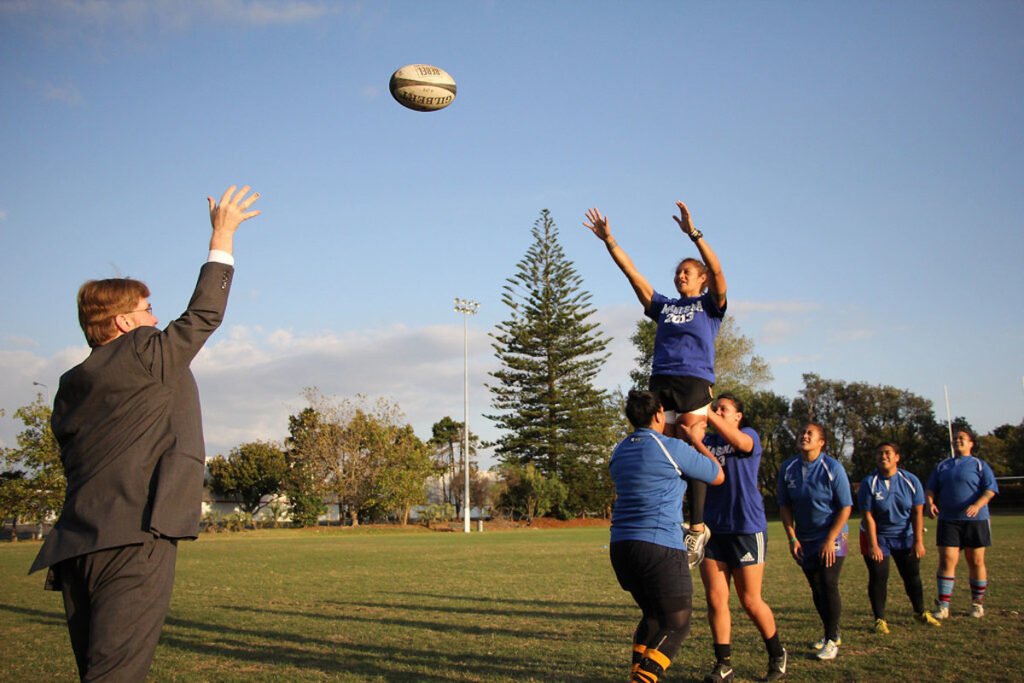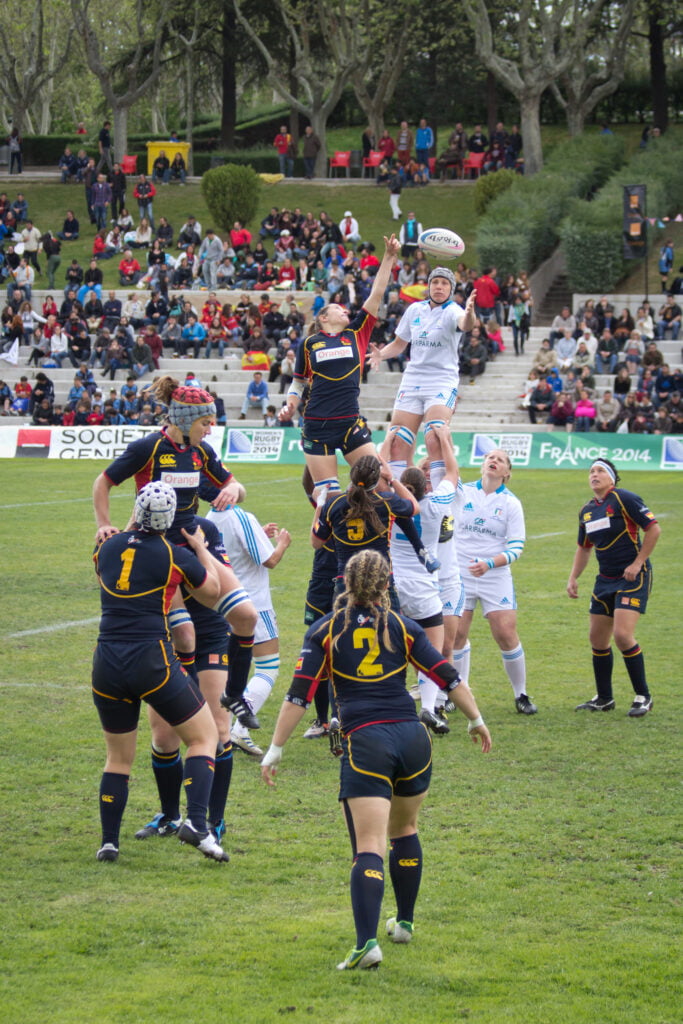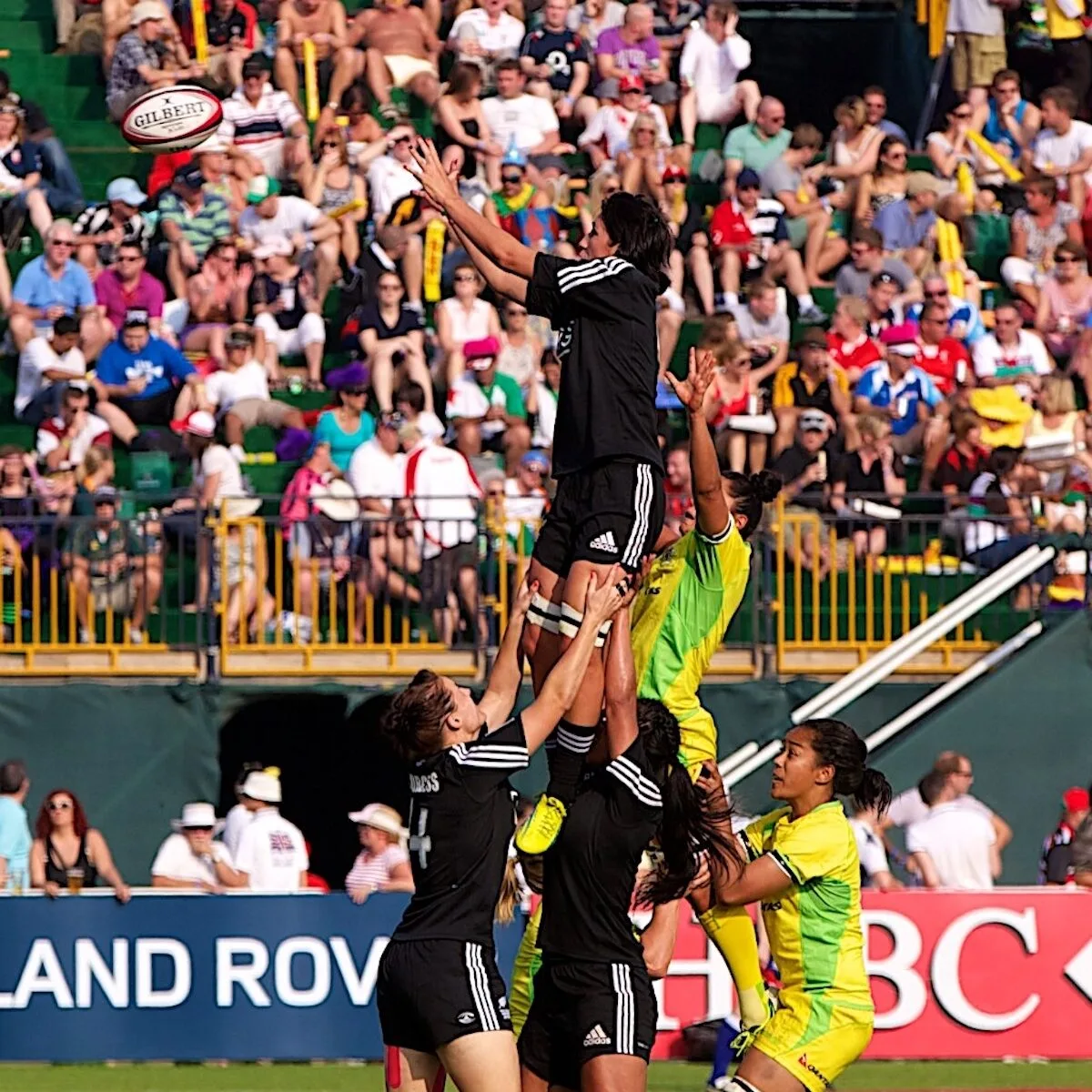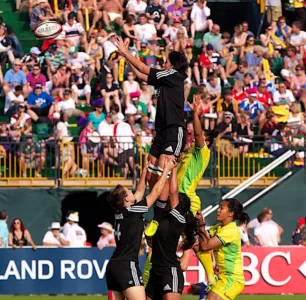A lineout is a type of restart in rugby union, where the ball is thrown in between two lines of players who have lined up parallel to each other. The aim of the lineout is to win possession of the ball. Players from the attacking team typically jump to catch the ball and secure it for their team. The lineout is taken when the ball has gone out of play over the touchline
What cases a lineout
A lineout is caused when the ball goes out of play over the touchline (sideline) either from open play or a penalty kick. In either case, the ball must then be brought back into play with a lineout. The lineout provides a platform for the team who did not cause the ball to go out of play to win back possession, and it can also be used as a tactical means of gaining territory.
Who is involved in a lineout
Several players from both the attacking and defending teams are involved. The attacking team usually includes the hooker, who throws the ball in, and several jumpers, who attempt to catch the ball. The defending team also has jumpers, who attempt to disrupt the attacking team’s attempts to catch the ball, and locks, who support the jumpers and try to win possession of the ball. Other players from both teams, such as the scrum-half and back-row forwards, may also be involved in supporting their teammates or contesting for the ball. The exact players involved in a lineout will depend on the tactics of the teams and the particular players’ positions and abilities.

Can you jump in a lineout?
Jumping is a common and important aspect of a rugby union lineout. The attacking team usually has jumpers who attempt to catch the ball thrown in by the hooker, while the defending team has jumpers who attempt to disrupt or contest the catch. Jumping in a lineout requires good timing, coordination, and aerial skills, as well as the ability to judge the flight of the ball and position oneself to make a clean catch. Jumpers from both teams must also consider the positions and movements of their opponents, as well as the tactics of their own team, in order to make the best decision about when and how to jump.
Can you lift in a lineout
lifting is a common technique in a rugby union lineout. In a lift, one player supports another player in the air, allowing them to reach higher and make a clean catch of the ball. Lifting is a legal technique, but it is subject to specific laws and regulations designed to ensure player safety. For example, only one player may be lifted at a time, and the lifted player must be safely supported and not hung in the air for an unreasonable amount of time. If a player is lifted illegally or in an unsafe manner, the referee may award a free-kick or penalty against the offending team.

Lineout penalties
There are several penalties that can be awarded during a lineout. Some of the most common include:
- Not straight: If the ball is not thrown straight by the hooker, a penalty may be awarded against the attacking team.
- Early engagement: If players from the attacking or defending team engage with each other before the ball has been thrown, a penalty may be awarded against the offending team.
- Offside: Players must be onside when the ball is thrown in, and if a player is in an offside position, a penalty may be awarded against their team.
- Lifting: If a player is lifted illegally or in an unsafe manner, a penalty may be awarded against the offending team.
- Obstruction: If a player obstructs an opponent or otherwise interferes with their ability to contest the ball, a penalty may be awarded against the offending team.
Penalties in a lineout can have a significant impact on the outcome of a match, as they can result in the award of a free-kick or penalty kick, which can give the opposing team an advantage or even score points. It is important for players to understand and comply with the laws and regulations governing lineouts in order to avoid giving away penalties.
When is a lineout complete
A lineout in rugby union is considered to be completed when the ball is played or made unplayable by either team. This usually occurs when the ball is caught by a player, carried out of the lineout, or knocked forward by a player. Once the lineout is completed, play continues as normal, with the team in possession of the ball looking to advance up the field and score points, while the opposing team works to regain possession and defend their goal line. If the ball goes out of play or if a player commits a foul, the game may be restarted with another lineout or with a different type of restart, depending on the circumstances.
How to win a line out
A team wins a lineout by successfully gaining possession of the ball. This is usually done by a jumper catching the ball thrown in by the hooker and securing it for their team. The objective of the lineout is to win the ball, either by catching it or by causing the opposition to knock it forward, so that the team can then continue to play and advance up the field.
To win a lineout, teams typically use a combination of tactics and individual skills. For example, the hooker may vary the speed, height, or trajectory of the ball in order to make it harder for the opposition to catch. The jumpers may coordinate their movements in order to create space for a clean catch, or they may use decoy runners to distract the opposition. The locks and other forwards may support the jumpers by lifting them or by positioning themselves to contest for the ball.
Ultimately, winning a lineout is about combining individual skills with team tactics and working together effectively to gain possession of the ball. Teams who are well-prepared, skilled, and coordinated in their lineout play are more likely to win lineouts and have a greater chance of success in the game.
Essential Lineout skills
there are several essential skills that are required to be successful in a lineout. These include:
- Throwing accuracy: The hooker must have good accuracy in throwing the ball in, so that it is straight and reaches the correct height and position.
- Timing and coordination: The jumpers must have good timing and coordination in order to make a clean catch of the ball.
- Aerial skills: The jumpers must have good aerial skills, including the ability to judge the flight of the ball, position themselves to make a catch, and secure the ball.
- Lifting and support: The locks and other forwards must be able to lift and support the jumpers, allowing them to reach higher and make a clean catch.
- Tactical awareness: Players from both teams must have a good understanding of the tactics used in a lineout and must be able to adjust their positions and movements accordingly.
- Physical attributes: Players in a lineout must have the necessary physical attributes, including height, strength, and athleticism, in order to compete for the ball and make clean catches.
- Communication: Teams must communicate effectively in order to coordinate their movements and make decisions about who will jump and how they will support each other.
By developing and improving these essential skills, players can become more successful in a lineout and help their team gain possession of the ball and advance up the field.

